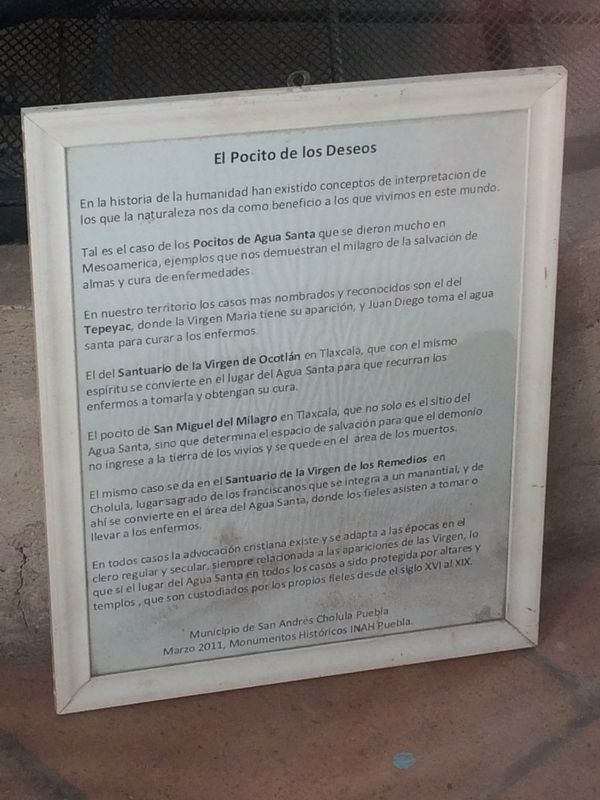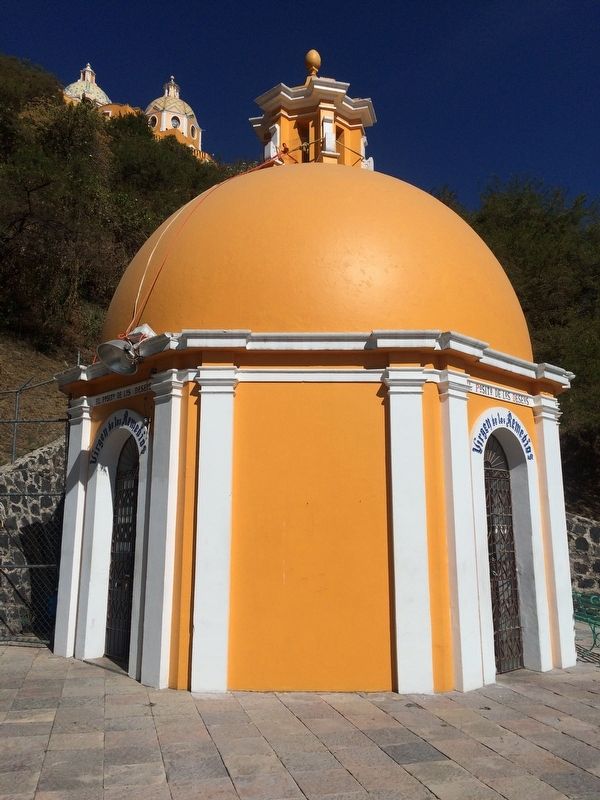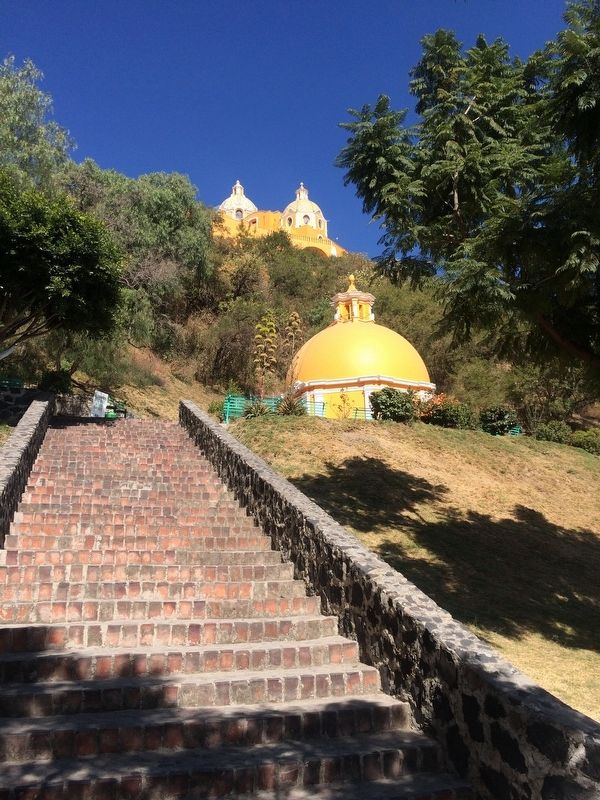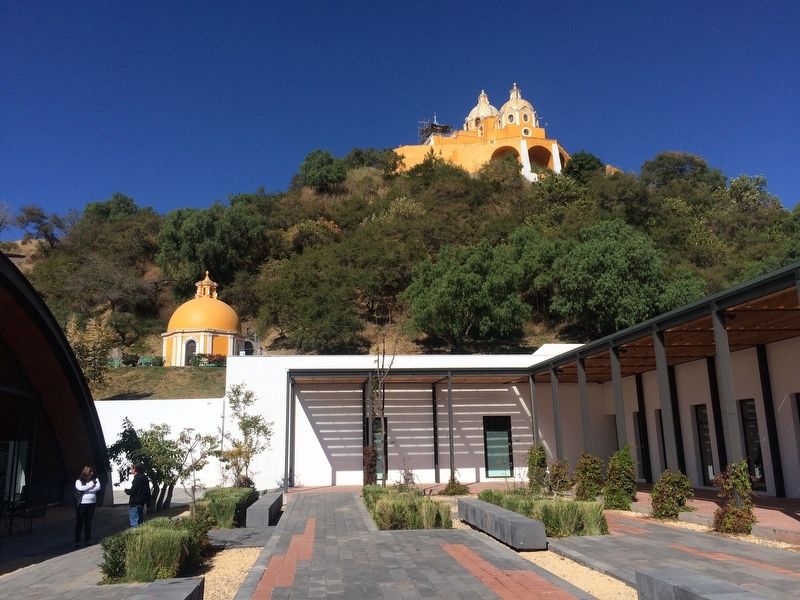San Andrés Cholula, Puebla, Mexico — The Central Highlands (North America)
The Wishing Well of Cholula
El Pocito de los Deseos
En la historia de la humanidad han existido conceptos de interpretacion de los que la naturaleza nos da como beneficio a los que vivimos en este mundo. Tal es el caso de los Pocitos de Agua Santa que se dieron mucho en Mesoamerica, ejemplos que nos demuestran el milagro de la salvación de almas y cura de enfermedades. En nuestro territorio los casos mas nombrados y reconocidos son el del Tepeyac, donde la Virgen Maria tiene su aparición, y Juan Diego toma el agua santa para curar a los enfermos. El del Santuario de la Virgen de Ocotlán en Tlaxcala, que con el mismo espíritu se convierte en el lugar del Agua Santa para que recurran los enfermos a tomarla y obtengan su cura. El pocito de San Miguel del Milagro en Tlaxcala, que no solo es el sitio del Agua Santa, sino que determina el espacio de salvación para que el demonio no ingrese a la tierra de los vivios y se quede en el área de los muertos. El mismo caso se da en el Santuario de la Virgen de los Remedios en Cholula, lugar sagrado de los franciscanos que se integra a un manantial, y de ahí se convierte en el área del Agua Santa, donde los fieles asisten a tomar o llevar a los enfermos. En todos casos la advocación cristiana existe y se adapta a las épocas en el clero y secular, siempre relacionada a las apariciones de las Virgen, lo que si el lugar del Agua Santa en todos los casos a sido protegida por altares y templos, que son custodiados por los propios fieles desde el siglo XVI al XIX.
Municipio de San Andrés Cholula Puebla
Marzo 2011, Monumentos Históricos INAH Puebla.
English translation:
The Wishing Well of Cholula
In the history of humanity there have been different ways to interpret what nature gives to us and benefits those of us who live in this world. Such is the case of the Wells of Holy Water, of which there are many examples in Mesoamerica. These examples show us the miracle of the salvation of souls and the curing of diseases. In our territory the most well-known and recognized cases are those of Tepeyac, where the Virgin Mary appeared, and from which Juan Diego took holy water to heal the sick. The well of the Sanctuary of the Virgin of Ocotlán in Tlaxcala was also well-known as a place where holy water was available for the sick to resort to it and to obtain cures. The well of Saint Michael of the Miracle (San Miguel del Milagro) in Tlaxcala is another location, which is not only the site of holy water, but by tradition also determines a space of salvation so that the devil does not enter the land of the living and stays in the area of the dead. The same case occurs in the Sanctuary of the Virgin of the Remedies (Virgen de los Remedios) here in Cholula, a sacred
place of the Franciscans that is integrated into a spring. From this spring it becomes another area of holy water, where the faithful attend to drink the water or to carry it to the sick. In all cases the Christian tradition exists and is adapted to the times in both the clerical and secular. The tradition of holy water is usually related to appearances of the Virgin. In all cases the areas of holy water have been protected by altars and temples which were guarded by the faithful themselves from the 16th to the 19th century.
Municipality of San Andrés Cholula, Puebla
March 2011, Historical Monuments, INAH Puebla.
Erected 2011 by Instituto Nacional de Arquelogía e Historia.
Topics. This historical marker is listed in these topic lists: Charity & Public Work • Churches & Religion. A significant historical month for this entry is March 2011.
Location. 19° 3.44′ N, 98° 18.08′ W. Marker is in San Andrés Cholula, Puebla. Marker can be reached from Calle 14 Poniente. The marker is inside of the Wishing Well of Cholula, on a pedestrian walkway that is just east of the Great Pyramid and leads towards the south from Calle 14 Poniente. Touch for map. Marker is in this post office area: San Andrés Cholula PUE 72760, Mexico. Touch for directions.
Other nearby markers. At least 8 other markers are within walking distance of this marker. Sanctuary of The Remedies (about 120 meters away, measured in a direct line);
Cholula (approx. 0.3 kilometers away); Dr. Moisés Toxqui Avila (approx. half a kilometer away); Dr. Alfredo Toxqui Fernández de Lara (approx. 0.6 kilometers away); Franciscan Convent of The Archangel Gabriel / San Pedro Cholula (approx. 0.7 kilometers away); Bernardino Rivadavia (approx. 0.7 kilometers away); Emiliano Zapata (approx. 0.8 kilometers away); Parish of San Pedro Apostle (approx. 0.9 kilometers away).
Related marker. Click here for another marker that is related to this marker. The Chapel of the Well at Tepeyac, mentioned in the marker text.
Credits. This page was last revised on December 10, 2017. It was originally submitted on December 10, 2017, by J. Makali Bruton of Accra, Ghana. This page has been viewed 235 times since then and 28 times this year. Photos: 1, 2, 3, 4. submitted on December 10, 2017, by J. Makali Bruton of Accra, Ghana.



